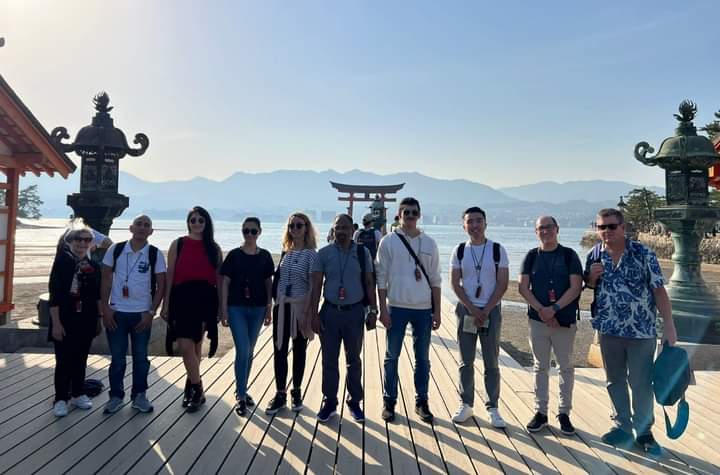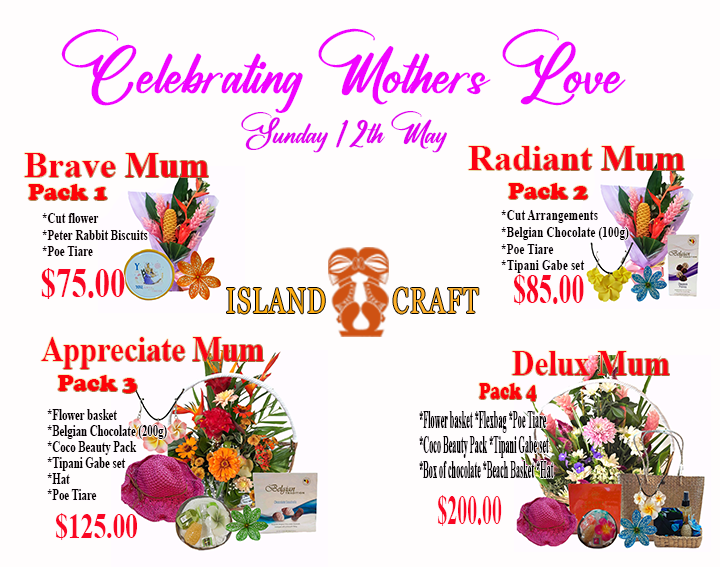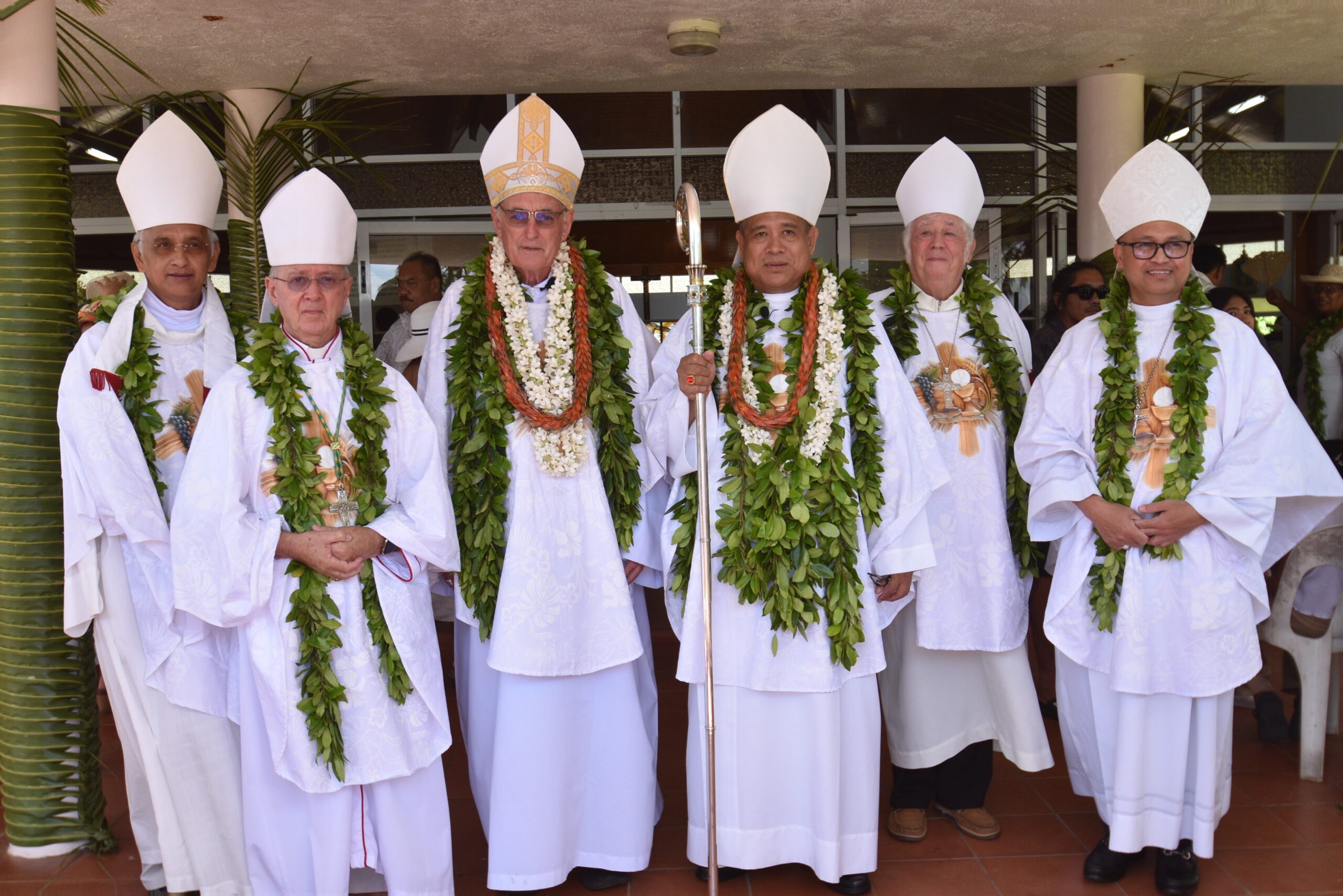All eyes on Japan
Tuesday 30 May 2023 | Written by Al Williams | Published in Art, Features, Pacific Islands, Regional, Weekend

Journalists from South Africa, from left, Philippines, Argentina, Mongolia, Turkey, Sri Lanka, Saudi Arabia, Kazakhstan, Mexico and the Cook Islands gather at the Itsukushima Shrine on Miyajima Island. It is a World Heritage site where G7 leaders met the following day. 23052670
There’s one thing glaringly obvious when I land in Tokyo - it’s big and it’s fast. Overwhelming at first, as the bus carrying me to my accommodation makes a two- hour journey through the massive metropolis. Al Williams was in Hiroshima, Japan to cover the G7 Summit and gives his account of a journey made possible by the Embassy of Japan in New Zealand.
High rise buildings, trains, buses, cars, bright lights and people - heaps of people.
Tokyo is a contrast to Rarotonga. I’m alongside nine journalists from around the world as we are being hosted by Japan at the G7 summit in Hiroshima.
We are taken to the Ministry of Foreign Affairs in downtown Tokyo - again it is big - I’m told it houses 6000 staff.
We are briefed by senior officials who give us a heads up on the summit.

The Hiroshima Peace Memorial Museum. AL WILLIAMS / 23052571
Nuclear nonproliferation, economy, Fukushima, Hiroshima, foreign policy and the role of media are topics of conversation.
They apply the pressure in terms of Fukushima, and the ongoing debate over the water release.
The International Atomic Energy Agency (IAEA) says the proposal is safe, but neighbouring countries – including the Pacific Island countries – have voiced concern.
Officials say the nation is being compliant.
On day two we depart from Tokyo Station for Hiroshima aboard the bullet train.

Miyajima Island is a popular destination for visitors. AL WILLIAMS / 23052672
It’s surprisingly smooth given the high speed it travels.
From Hiroshima Station we make our way by bus to a ferry which takes us across the water to the world famous Miiyajima Island, site of the Itsukushiama Shrine.
It’s known as a spiritual spot and I can sense the peace.
Thousands of tourists visit the site each day and we are lucky to catch a glimpse of what the G7 leaders experience the following day.
We jokingly label ourselves the G10 – based on the 10 nations we represent.
Cook Islands, Saudi Arabia, Turkey, Kazakhstan, Mongolia, Argentina, Philippines, South Africa, Mexico and Sri Lanka.
We make our way to the Daisho-in Temple, home to the Shingon sect, and one of the most prestigious temples in Japan.

Hiroshima with Miyajima Island in the foreground. AL WILLIAMS / 23052673
Things start to get magical as priests address us through an interpreter, and we get a tour of their ancient home.
There are visual and audial delights, enhanced by the aroma of incense.
The following day we are at the Hiroshima Peace Memorial Museum for a guided tour.
It’s hard to put the experience into words.
It’s moving at the very least as we hear and read multiple accounts from survivors.
August 6, 1945 was quite simply a horrible day.
From there we made our way to Okonomiyaki Cook School to cook and taste the local delights.
Okonomiyaki is a dish which fuses flour batter and other ingredients to create a pancake.
The ingredients can include cabbage, meat, and seafood, and toppings include the famous okonomiyaki sauce.
It is exclusive to Hiroshima.
Friday is when things really get underway in Hiroshima.

The Atomic Bomb Dome in Hiroshima. AL WILLIAMS / 23052675
There is a growing police presence, (24,000 cops), road closures, the constant buzzing of helicopters overhead and the arrival of foreign leaders.
We are bused to the media centre, a massive hub of journalists, but not ahead of securing a face to face interview with Cook Islands Prime Minister Mark Brown, who is staying in the hotel next door to me.
The journalists I am touring with are envious the Cooks has such easy access to its leaders.
I manage to file copy to the office in Rarotonga, and now, here I am again at the media centre in Hiroshima on Saturday, and the Ministry of Foreign Affairs has just notified me they will take me to sit in on PM Brown’s bilateral talk with the Japan Prime Minister this evening.
It’s a late night as there are delays.
I am taken by bus with a contingent of journalists, through numerous security gates to a hotel where security is heavy.
We wait, and wait, then we are taken through a vast array of corridors, up flights of stairs, then to an elevator which takes us to the 22nd floor of the building.
Then we climb more stairs and wait for another 45 minutes before the two leaders arrive.
They exchange brief greetings then we are all ushered out.
On Sunday I get a message from PM Brown inviting me to another face to face meeting at his accommodation.
By now, I have been contacted by a Tokyo-based German journalist at the media centre, who covers Pacific affairs.
He is looking to interview PM Brown so I put him in touch.
He arrives shortly after me at the hotel and we sit and chat with the Prime Minister.
Once again, I climb aboard the chartered bus and head back to the media centre where I type up the notes from the meeting and wire them back to Rarotonga.
It’s great to get PM Brown’s evaluation of the summit and I’m pleased my new German friend gets an interview as well.
It turns out well for him, as he emails me a link to his story, which appears in a widely read German publication.
We depart for Kyoto aboard the bullet train late on Sunday and arise on Monday to a beautiful day in the city.
Kyoto was largely spared from the bombing in WW2 and contains a number of ancient temples.
We make our way by bus to the Kinkaku-ji and Ginkaku-ji temples where thousands of tourists are gathered to take in the sights and sounds.
It’s simply magical.
From there it’s back aboard the bullet train to Tokyo where we visit the Sky Tree.
It towers over Tokyo at 630 metres – the tallest tower in the world
If you suffer from vertigo, don’t bother.
It’s staggering and the views of downtown and wider Tokyo are phenomenal.
We head out to a wagyu eatery on the last night in downtown Tokyo.
I manage to stop in briefly at a karaoke bar and give them a rendition of Ben E King’s Stand by Me.
The locals seem amused.
Wagyu is the collective name for the four principal Japan breeds of cattle and we barbecue it on a grill at our table.
The last day comes around too fast and the lucky ones, including myself, who don’t have early flights are treated to a tour of the Tokyo fish market and teamLab Planets Tokyo – a digital art museum.
Back to the hotel and I’m chauffeured to Nartia International Airport – once again taking in the massive metropolis that is Tokyo
One more thing I need to add. I have been sure to thank the many people I have met here - all have been hospitable.
I have made acquaintances with other journalists, officials, bus drivers, interpreters, tour leaders, and hotel staff.
I’ve even been interviewed by a number of journalists here. It’s a great opportunity and I would do it all again.
Thankyou Japan.
‘As the G7, you are the most influential economic and political grouping in the global order, you have an obligation to lead on climate action through actions, not just words’
Pacific, leaders in addressing crises faced worldwide
In addressing the G7 summit on ‘Working Together to Address Multiple Crisis (Food, Health, Development, Gender)’ Pacific Islands Forum Chair and Cook Islands Prime Minister Mark Brown made key points about the 18 island nations he represented.
“As a collective, our Pacific region contributes less than 0.03 percent to global emissions. Our emissions are the equivalent of a burning matchstick in a forest fire,” he said.
“While we continue to use our best efforts and ingenuity to protect ourselves and to protect our ocean, we urgently need developed countries, certainly those within the G7, to deliver on their climate finance commitments, first made in Cancun in 2010, followed by the Paris Agreement in 2015, and today still not met.”
Brown said the finance must be directed to the most climate vulnerable countries, “of which many are small island developing states (SIDS) in the Pacific.
“We continue to face the ongoing onslaught of global climate change, a phenomenon that we did little to contribute to but whose impacts we suffer from the most.
“Shipping is our lifeline; more than 90 per cent of our trade, including food, medicines and building materials, reach us by sea.
“We already pay the most expensive shipping costs in the world, due to distance and diseconomies of scale.
“The measures being proposed by G7 countries for the adoption of IMO operational and fiscal measures would add even more cost to us and seriously jeopardise the livelihoods of our people and our economies.”
In borrowing the words of the Honourable Prime Minister from Barbados, “poor countries paying the price of wealthier nations”, Brown said “hear us when we say, the proposed IMO measures will severely impact the already costly shipping services available to us and must therefore be re-assessed from the lenses of our most vulnerable communities”.
“Again, we call for the attention of the G7 to identify any disproportionate impacts and address them prior to the approval and subsequent adoption of any such measures.
“We have been consistent from the outset that any funds raised through a punitive levy, now being considered at the IMO, to be imposed onto shipping, must not come at the cost of the Pacific and SIDS.
“Our region, already suffering the highest transport costs, cannot and must not be further penalised by such measures; it is up to the G20 countries, not least those within the G7, responsible for over 80 per cent of global emissions, that we are beholden to for our survival to ensure any disproportionate impacts are addressed prior to any shipping measures at the IMO.”









































